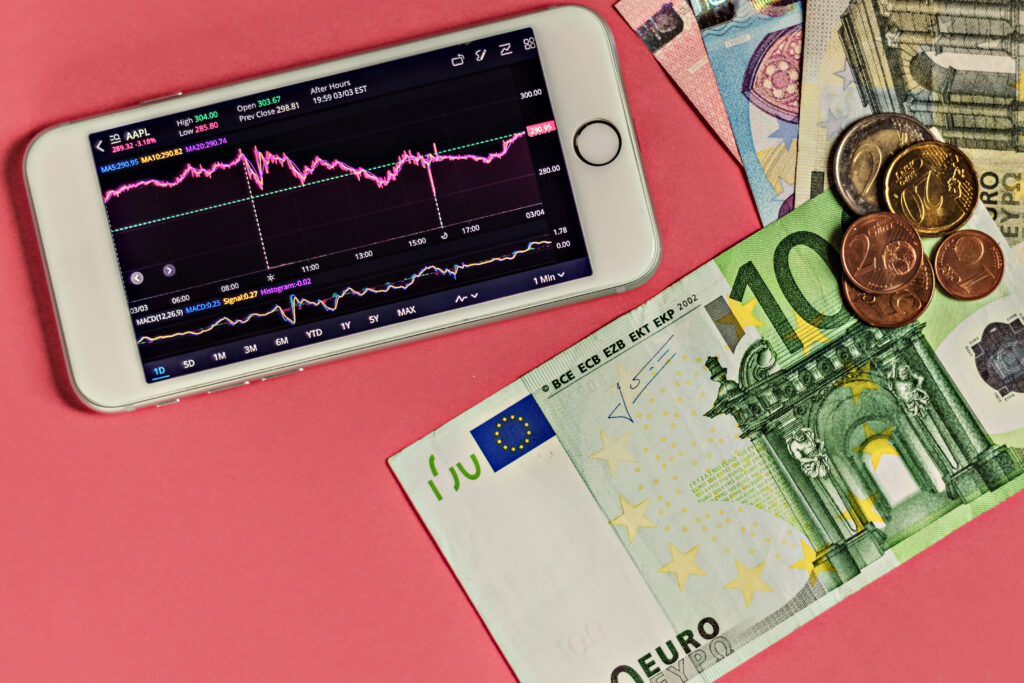In 2025, trading has become faster, smarter, and more competitive than ever. From AI-powered forex analysis to instant social sentiment feeds, traders today have endless access to data. Yet, even with advanced technology, most traders still struggle with consistency. The truth is simple—discipline in trading outperforms every technical indicator and every market forecast. Market direction might create opportunities, but discipline decides who profits from them.
Traders often believe the right prediction guarantees success. However, experience proves otherwise. Even accurate forecasts mean little without execution discipline. Trading psychology plays a major role here. A calm, rule-based trader often outlasts one who chases trends impulsively. No algorithm can replace the emotional control that separates a professional from an amateur.
Modern trading success depends less on predicting what will happen and more on reacting correctly when it does. That reaction stems from discipline in trading, emotional balance, and a consistent trading strategy that remains steady despite changing markets.
Discipline in Trading—The Foundation of Market Mastery
Discipline in trading is not about rigid control but consistent behavior. It involves executing a plan precisely, regardless of external noise or emotional impulses. Markets in 2025 fluctuate rapidly due to global interest rate changes, geopolitical tensions, and algorithmic trading surges. In such environments, only disciplined traders survive long-term.
A trader with discipline waits for confirmation signals before entering trades. They follow defined rules for risk exposure and exit strategies. This consistency builds trust in their system. Undisciplined traders, by contrast, constantly switch methods after a few losses, never allowing any strategy to mature.
Discipline also defines professionalism. Successful traders keep journals, track performance, and review every trade. They don’t rely on luck or emotion; they rely on process. Even during drawdowns, they stick to their plan. This control over emotions and method ensures survival during volatile cycles—something no indicator can guarantee.
Factually, market data shows over 70% of traders quit within their first two years due to emotional mistakes, not analytical ones. The lesson is clear: mastering self-discipline outlasts mastering any chart pattern.
Trading Psychology—Where Winning Decisions Begin
Behind every disciplined trader lies a well-trained mind. Trading psychology controls how traders perceive risk, handle loss, and manage fear. The best analysis collapses under pressure if a trader panics during volatility. That’s why developing psychological resilience is as vital as learning technical setups.
Fear, greed, and impatience are common mental traps. In forex markets, where leverage magnifies outcomes, emotions can destroy capital faster than poor strategy. Successful traders train themselves to respond, not react. They pause, breathe, and evaluate before clicking ‘buy’ or ‘sell.’
Modern traders also face new psychological challenges. Social media exaggerates profits and triggers comparison anxiety. The constant flow of influencer trades can distort judgment. A disciplined trader filters that noise and focuses on their plan.
Developing emotional control in forex trading involves daily practice. Journaling emotions, using meditation techniques, and reviewing trades without bias help regulate thought patterns. Traders who treat the market as a performance environment—like athletes or pilots—build consistency. It’s not about being emotionless; it’s about managing emotions to act logically under stress.
read here to learn more about ” Psychology Behind Forex Trading What Every Trader Should Know“
Consistent Trading Strategy—Turning Process into Profits
A consistent trading strategy transforms uncertainty into structure. Markets constantly change, but discipline ensures your reaction stays predictable. Consistency doesn’t mean using one setup forever—it means applying a repeatable process to identify, execute, and manage trades.
Traders with consistency focus on probability, not perfection. Every strategy has losing trades, but consistency ensures risk remains controlled. This principle separates professionals, who think in percentages, from beginners, who chase single wins.
In 2025, top-performing forex traders often blend discretionary and automated systems. They use algorithms to filter signals and human judgment to confirm setups. This hybrid model works only when discipline governs both elements. Overconfidence or impulsive override of systems usually causes failure.
Consistency in strategy also builds statistical confidence. When you execute similar trades over months, patterns emerge. You learn what works and what doesn’t. This knowledge compounds into sharper performance, something that no random guessing can replace.
Remember: success doesn’t come from finding the perfect trade; it comes from executing your edge consistently.
Emotional Control in Forex Trading—The Invisible Advantage
Every trader faces emotional highs and lows. Forex markets react instantly to central bank statements, inflation data, and geopolitical shifts. Without emotional control in forex trading, even small moves can trigger panic or greed. The difference between success and failure often lies in how calmly a trader reacts.
A trader’s emotions follow predictable cycles—fear of missing out during rallies and fear of loss during corrections. Understanding this pattern helps control impulses. Disciplined traders create preset rules to neutralize emotion: stop-loss limits, take-profit targets, and cooldown periods after big trades.
Research from trading psychology experts shows that emotional fatigue directly reduces profitability. Overexposure to screens or losses increases risk-taking. That’s why modern traders schedule breaks, automate alerts, and use risk caps.
Key practices to enhance emotional control:
- Trade only during scheduled hours to avoid fatigue.
- Accept small losses as part of the process.
- Limit trade size to reduce anxiety.
- Evaluate performance weekly, not trade by trade.
- Focus on consistency instead of daily results.
Emotional stability isn’t natural—it’s trained. The most successful forex traders of 2025 know when not to trade. That restraint, guided by discipline, protects capital and confidence.
Trading Discipline and Risk Management—The Shield of Success
Without trading discipline and risk management, even the best strategy fails. Markets reward those who manage losses better than they celebrate wins. Risk management is not about avoiding losses but about controlling them so profits can compound.
Disciplined traders define maximum risk before entering any trade. They decide their stop-loss, target, and position size logically. This prevents emotional interference mid-trade. In contrast, traders who move stops or double positions due to frustration quickly spiral into losses.
The 2025 forex landscape shows increasing volatility around macroeconomic announcements. Traders using disciplined risk controls—like percentage-based position sizing—sustain profits over time. They view each trade as a part of their portfolio, not as a crucial decision.
A sound risk management plan includes:
- Capping losses at 1–2% of total capital per trade.
- Avoiding correlated trades across the same currency pair.
- Using trailing stops to protect profits.
- Avoiding overleveraging even in high-confidence setups.
This combination of discipline and structure builds longevity. Legendary investors like Paul Tudor Jones and Ray Dalio attribute their long-term success not to prediction but to risk management discipline. Markets reward those who protect their downside.
Market Direction—A Temporary Illusion Without Structure
Chasing market direction is one of the oldest mistakes in trading. Every beginner wants to predict tops and bottoms. Yet, professional traders focus less on prediction and more on preparation. Market direction may provide context, but execution defines outcome.
Interest rate differentials, trade balance data, and geopolitical uncertainty influence the forex markets. Predicting direction alone doesn’t ensure profit because timing and management matter more. Even when analysis is correct, poor entry or emotional exits ruin performance.
Real-time AI models are used by many traders in 2025 to detect directional bias. However, studies indicate that over 60% still lose due to human decision errors. The reason? A lack of discipline in trading during volatile reactions is the primary cause.
For instance, if the euro strengthens after an ECB announcement, undisciplined traders might enter late, just before reversal. Disciplined ones wait for retracements, confirming structure before acting. The lesson is simple—direction is temporary, discipline is permanent.
Discipline vs. Prediction—A Modern Case Study
Consider two traders using identical setups during a major U.S. inflation release. Trader A predicts an upward move and enters aggressively. Trader B waits for the initial spike to settle, following his plan. When volatility reverses, Trader A panics and exits at a loss, while Trader B enters calmly during retracement and profits.
The difference wasn’t in analysis—both anticipated the same outcome. It was discipline that separated them. This scenario repeats across thousands of trades daily in 2025’s fast-paced forex market.
According to a 2024 CME Group behavioral study, traders who followed predefined rules had 35% better consistency in monthly returns. Their disciplined approach allowed them to recover faster from drawdowns and maintain stable risk exposure.
Predicting markets might feed the ego, but discipline feeds the account balance.
How to Build Discipline in Trading – Practical Blueprint
Becoming disciplined isn’t about willpower alone; it’s about systems that reinforce control. Every trader can train discipline using structured methods.
Step 1: Write a clear trading plan.
Define your entry criteria, timeframes, and exit strategy. A written plan reduces emotional decisions.
Step 2: Track every trade.
A trading journal helps identify recurring mistakes. Reviewing emotional triggers builds self-awareness.
Step 3: Manage risk precisely.
Use fixed position sizes and maximum loss limits. This creates predictability.
Step 4: Maintain a healthy routine.
Exercise, sleep, and nutrition influence mental clarity. Trading under fatigue often leads to poor judgment.
Step 5: Use automation wisely.
Set alerts or partial automation to enforce discipline. Technology can act as a neutral reminder when emotions rise.
Step 6: Review weekly performance.
Instead of daily emotions, evaluate weekly or monthly progress. This long-term view supports consistency.
Over time, these habits make discipline instinctive. Like a muscle, it strengthens with repetition. By following these principles, traders evolve from reactive to strategic.
Trading Psychology in 2025—Adapting to Modern Pressures
As technology advances, trading psychology becomes more complex. Instant alerts, algorithmic signals, and news-driven volatility overload the brain. Maintaining discipline in trading amid constant stimuli requires mindfulness and focus.
The rise of community trading on Telegram, Discord, and X (Twitter) adds social pressure. Traders now compete not just with markets but with digital performance comparisons. This creates emotional bias—fear of missing out or validation seeking.
Modern traders counteract these issues by setting boundaries: limiting social media exposure during trading hours, practicing daily mindfulness, and avoiding impulsive copying of others’ trades. Behavioral finance research in 2025 emphasizes that digital noise is the new emotional trap.
Ultimately, trading psychology remains the invisible force behind discipline. Even with AI-driven assistance, human judgment still matters. The most successful traders learn to balance intuition, data, and emotion through continuous psychological training.
Why Discipline Outranks Market Direction—The Timeless Principle
When the charts, trends, and forecasts fade, only one element decides survival—discipline. Markets in 2025 move faster, but human behavior hasn’t changed. Those who maintain calm execution outperform those who predict perfectly but panic emotionally.
Discipline in trading provides structure amid chaos. It ensures that strategies are followed, risks are managed, and emotions are contained. Trading psychology strengthens this foundation by aligning mindset with consistency. Meanwhile, emotional control in forex trading prevents losses caused by fear or overconfidence.
Predicting direction is temporary knowledge; managing discipline is a permanent skill. A consistent trading strategy backed by discipline creates compounding growth, turning average traders into long-term winners.
Even during global uncertainty—from inflation spikes to policy changes—disciplined traders stay profitable by focusing on behavior, not noise. This timeless edge ensures that they thrive regardless of market direction.
Conclusion – Master Yourself, and the Market Will follow.
The greatest myth in trading is that success comes from prediction. In reality, success comes from mastering oneself. Discipline in trading outperforms all forecasts because it brings consistency, risk control, and emotional strength.
A disciplined trader reacts with clarity, not impulse. They focus on process, not outcomes. This mindset transforms trading from a gamble into a structured craft.
In the end, market direction will always change—interest rates rise and fall, currencies fluctuate, and trends reverse. But the trader who maintains emotional control, follows a consistent trading strategy, and practices trading discipline and risk management will continue to grow.
Discipline doesn’t just create profits; it creates longevity. And in 2025’s unpredictable world, longevity is the real definition of success.
Read here to learn more about “Social Media Trends in Forex Market Influencing Global Trading“




